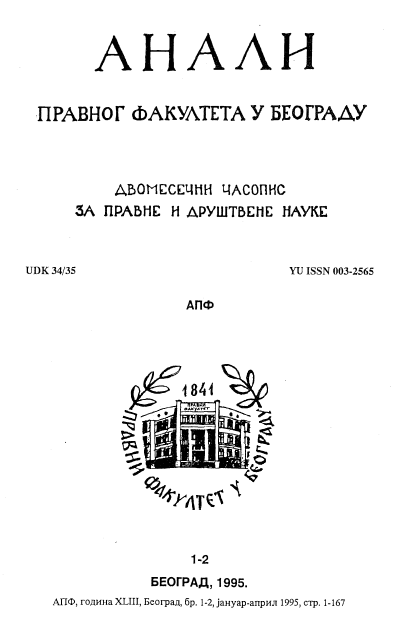THE INSTITUTION OF HEAD OF STATE IN THE FORMER SOCIALIST COUNTRIES
THE INSTITUTION OF HEAD OF STATE IN THE FORMER SOCIALIST COUNTRIES
Author(s): Vladan M. KutlešićSubject(s): History of Law, Government/Political systems
Published by: Правни факултет Универзитета у Београду
Summary/Abstract: The period from 1989 to the present day will undoubtedly receive a chapter all its own in the history of constitutional law, and it indeed deserves special study because of the large number of new constitutions which have been promulgated in Europe in the space of just a fewyears. These constitutions were not the result of a natural process of updating or replacing previous constitutions. On the contrary, they represent the legal codification of the enormous changes that have swept virtually all of the former socialist states in Europe, from Poland to Albania. There are a number of features which these new constitutions hold in common (political pluralism, separation of powers, wide-ranging civil rights and liberties, etc.) and which allow them to be placed in the same category. One such shared institution, resulting from the introduction of the separation of powers as a principle in the organization of these states, invites a comparative study of all these constitutional systems. It is the office of head of state. There are a number of reasons that make this institution particularly interesting. Firstly, all the new constitutions of the former socialist states have opted for a bicephalic executive, dividing power between the head of state and the prime minister and his cabinet, so that the first question that automatically imposes itself is how they compare with the known theoretical models and constitutions in the world.
Journal: Анали Правног факултета у Београду
- Issue Year: 43/1995
- Issue No: 1-2
- Page Range: 1-22
- Page Count: 22
- Language: English

